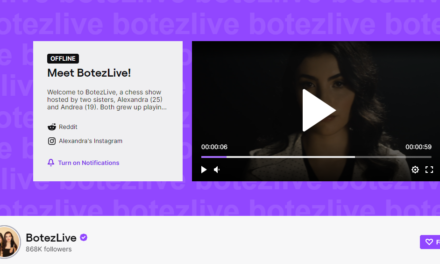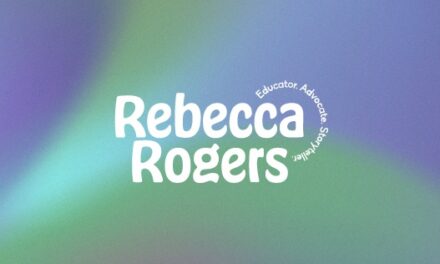Generation Creative Control
Ads targeted at Generation C don’t appeal to some vague, generalized ideal of what’s cool. They appeal directly to YOU. It’s about what you want to create; it’s about what you want to consume. Whatever your ideas are, whoever your friends are, whatever it is that you like to do, they’re unique and special to marketers. HP, Canon, Verizon, T-Mobile, and many other companies are pitching their products as platforms for customization and creation, whether it’s building your own network of “Fave 5” friends or building your own photo album online at HP’s Snapfish website.
Gen C isn’t the static consumer audience that its predecessors were. If they don’t like a ringtone, they’ll make one themselves. If they don’t like news coverage, they’ll write their own stories and shoot their own videos. So, to keep connected with Generation C, marketers are forced to get creative in their own way.
Time is at a premium for Generation C, and they like to have instant, on-demand access to their content wherever they go. According to George Tingo, CEO and founder of Mobile Campus, “Mobility is critical.” Cell phones are their constant companions, so producers are adding more content-delivery features to get email, video, and pictures on the (very) small screen, what Dew calls “content-centric communication.”
Vodafone struck deals with YouTube, eBay, and MySpace to bring user-generated content through its mobile delivery service. And the soon-to-be-launched iPhone bridges multiple Gen C must-have applications in one carry-around device.
Nine out of 10 college students have cell phones, and few bother with land lines at all. Administrators and advertisers looking to reach them with information can’t expect students to come to them anymore—they have to reach out and make the message both meaningful and mobile.
Tingo works with schools like the University of Texas and the University of Florida to design new strategies for connecting with students. “They’re looking for the essential mobile portals, and the technology allows advertisers to drill down.” His company provides a text-messaging platform for administrators to contact students about an impending ice storm, as well as a way for the local Domino’s to lure pizza lovers with offers of free breadsticks.
Tingo describes the ideal Generation C ad strategy as a “pull versus a push theory.” Rather than inundate these consumers with unwanted telemarketing calls or email spam, which just get ignored or deleted, Tingo is helping Mobile Campus subscribers seek out the kind of ad messages that are meaningful to them as sorority girls, band members, or math majors.
Generation C craves control over content, both direct and indirect. That’s why many agencies have started aggressively seeking out, developing, and featuring user-generated ads, which generated their own kind of buzz beyond a 30-second, easy-to-ignore spot.
The Super Bowl telecast is typically advertising’s biggest game of the year. But in 2007, companies called on college students and web junkies to create ads airing in million-dollar spots. Chevrolet hosted a contest for college students to submit their best ideas for a Super Bowl ad. Entries were posted to a Chevy Super Bowl Ad Challenge Blog. Chevrolet then flew student finalists to Detroit to pitch their spot to company executives, and winner Katie Crabb, a student at the University of Wisconsin at Milwaukee, saw her commercial professionally produced. Other big-ticket products, like Doritos, Snickers, Alka-Seltzer, and even the NFL itself, all hosted similar open-call Super Bowl spot web contests and rewarded the best user-generated idea with the sweetest slots on commercial TV.
Companies wouldn’t put their precious image in the hands of amateurs without a good reason. Rather than viewing a half-dozen agency pitches, user-generated ads give the marketing department thousands of ideas to sift through, as well as creating buzz around their product within the target demographic long before the ad even airs.
By tapping into Generation C’s desire to create and giving them a chance to deliver their work to a global audience, companies are creating content-based networks around their products. Freestyle, a California company that makes watches for surfers, devotes a portion of their site to something called F-Style, where customers can upload and share videos and pictures of users and their friends “doing your Freestyle thing—whether it’s surfing, skating, boarding, music, or art.” The company pitches a monthly theme and entrants can win cash and product prizes for their entries. The F-Style network allows users to connect via content over shared experiences, and, Freestyle hopes, their product.
The site also gives Freestyle executives a chance to scout the best of Gen C talent when recruiting athletes to sponsor. “I’m getting movies from 13-year-old kids these days—that’s how kids get sponsored,” says Freestyle marketing director Chad Labass. “They can send us info about themselves and that’s great, but when you see a video of them actually doing it, you see that hey, this is something special.”
However, companies know they can’t keep counting on the best of Generation C’s creativity forever. The next “C” in Generation C’s future, according to digital trend site Trendwatching.com, is “cash.” When Google bought YouTube for $1.65 billion in 2006, the question on everyone’s lips was: How do you expect to make money from something that doesn’t cost its users anything? But business and technical models are shifting to account for the fact that content creators are the same people who consume that content. To cultivate and snag top Gen C talent, sites like Revver are testing pay models that reward the best and most popular content they host.
With its user-friendly digital video interface, Revver hopes to create a quality content network by pairing videos with relevant ads and sharing revenue with the creator 50/50. Revver recently negotiated a mobile video-delivery deal with Verizon Wireless and announced that it will cut creators in on profits when their videos are downloaded to phones.
A recent Revver success story shows how much a clever Generation C concept can stand to make. A popular viral video showing the explosive effects of combining Diet Coke with Mentos raked in more than $35,000 for its two creators, several TV appearances, and a deal with Coca-Cola and Mentos after more than 7.5 million online views.
Connecting with Generation C
Keeping up with Generation C isn’t easy. They’re empowered by their creative control and are setting the pace and tone for the way content is developed and deployed. To them, content doesn’t just have entertainment or information value—it’s social, it’s personal, and it’s their lifestyle.
Going forward, advertisers and traditional media companies looking to reach this dynamic demographic will have to find ways to fit themselves into content that’s beyond their creative control. “It’s about providing context to the content,” Dew says.
The interactivity of the web is the perfect place for users and creators to come together and find a common vision. For instance, Apple and Nokia are among the many big-name technology companies that host message boards and blogs for users to post their ideas about features and improvements they’d like to see in upcoming products.
Companies Featured
Blogger
www.blogger.com
Critical Path
www.criticalpath.net
Facebook
www.facebook.com
Freestyle Inc.
www.freestyleusa.com
Mobile Campus
www.myspace.com/mobilecampus
MySpace
www.myspace.com
Obama ‘08
www.barackobama.com
PopTeenUS
www.popteenus.com
Revver Inc.
www.revver.com
YouTube
www.youtube.com






